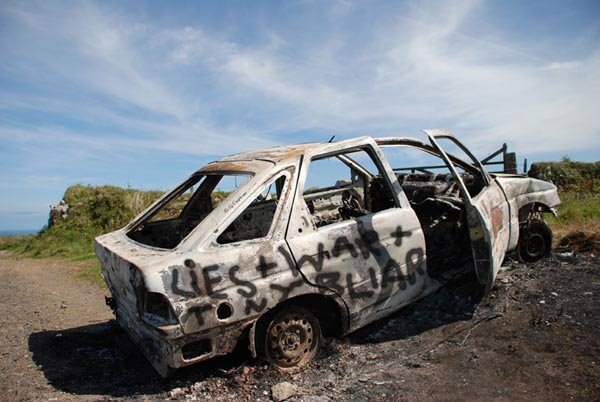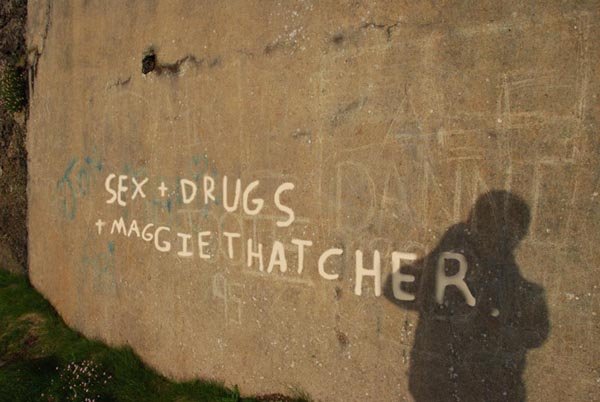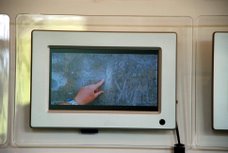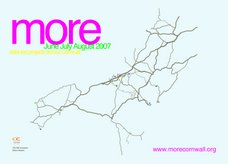
In some cases the evidence of the paint is so miniscule that it is hardly discernible from the surface of the concrete. Using digital software to enlarge the prints back in my studio proved fruitful and yet frustrating. Adjusting contrast, saturation, colour balance etc helped to emphasise some parts but not others and when viewed under digital magnification the image was slightly out of focus the grains of paint became unidentifiable. I wanted to ensure that the text was as faithfully recorded as possible without resorting to drawing on the surface of the wall as I didn’t want to add or interrupt its cycle avoiding permanent damage to the graffiti but still allow a faithful reproduction to be recorded. I wanted to adopt a similar approach to perhaps an archaeologist working in the field and utilise this process as a tool for my arts practice. I considered using chalk as a last resort to lightly draw around the outline of some letters re-mapping them without too much of an ingression. [This is a technique used at Geevor to arrest the demise of the chalk graffiti in and around the Dry]. I returned to the site and began to point with my fingers/hands/thumbs at those parts that were proving most difficult to pinpoint and photographed these positions. Once catalogued these images of the painted surface along with the more detailed close ups formed the resource from which the digital reconstructions were made.



































No comments:
Post a Comment